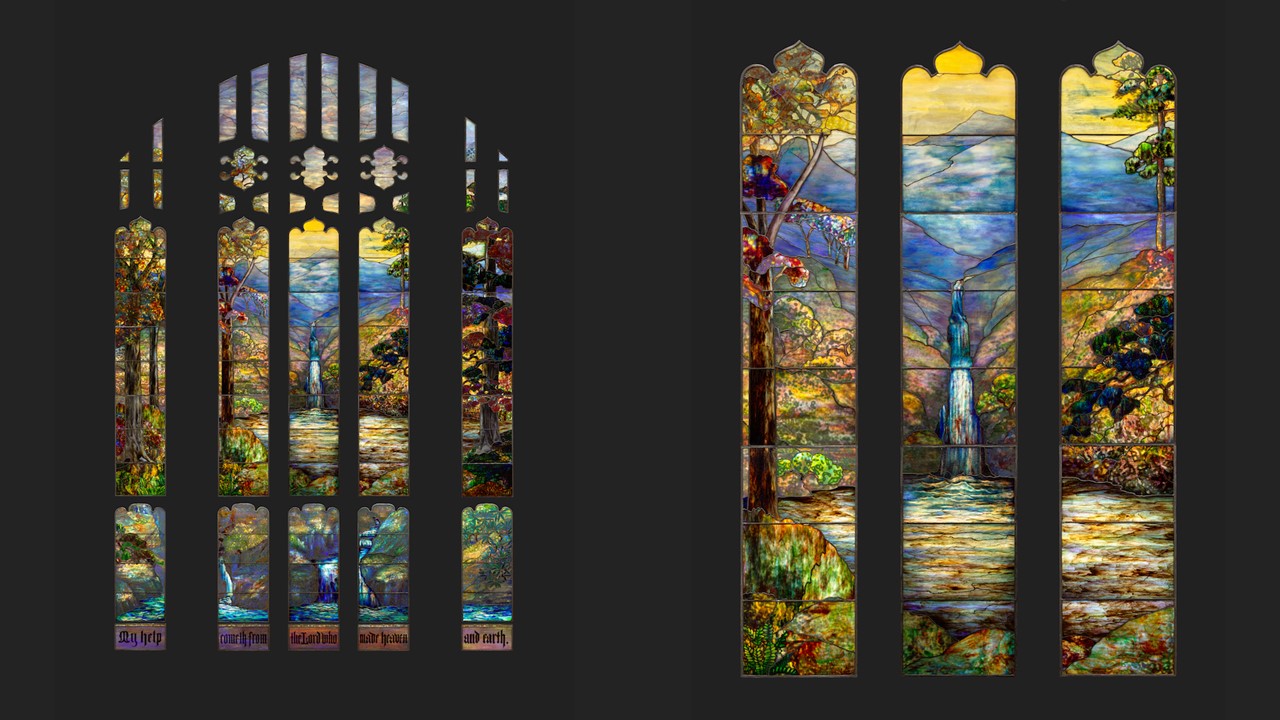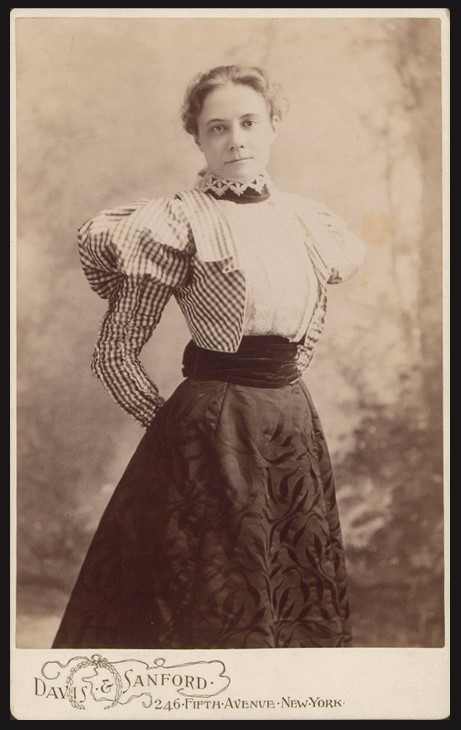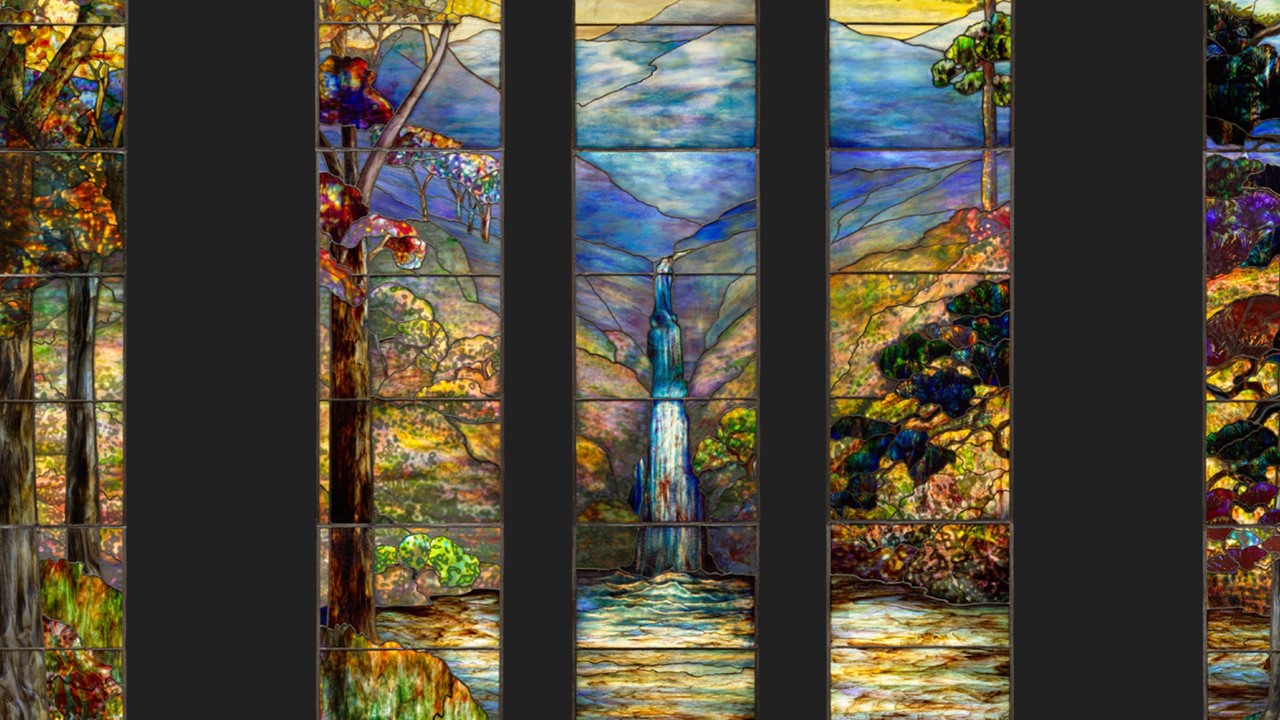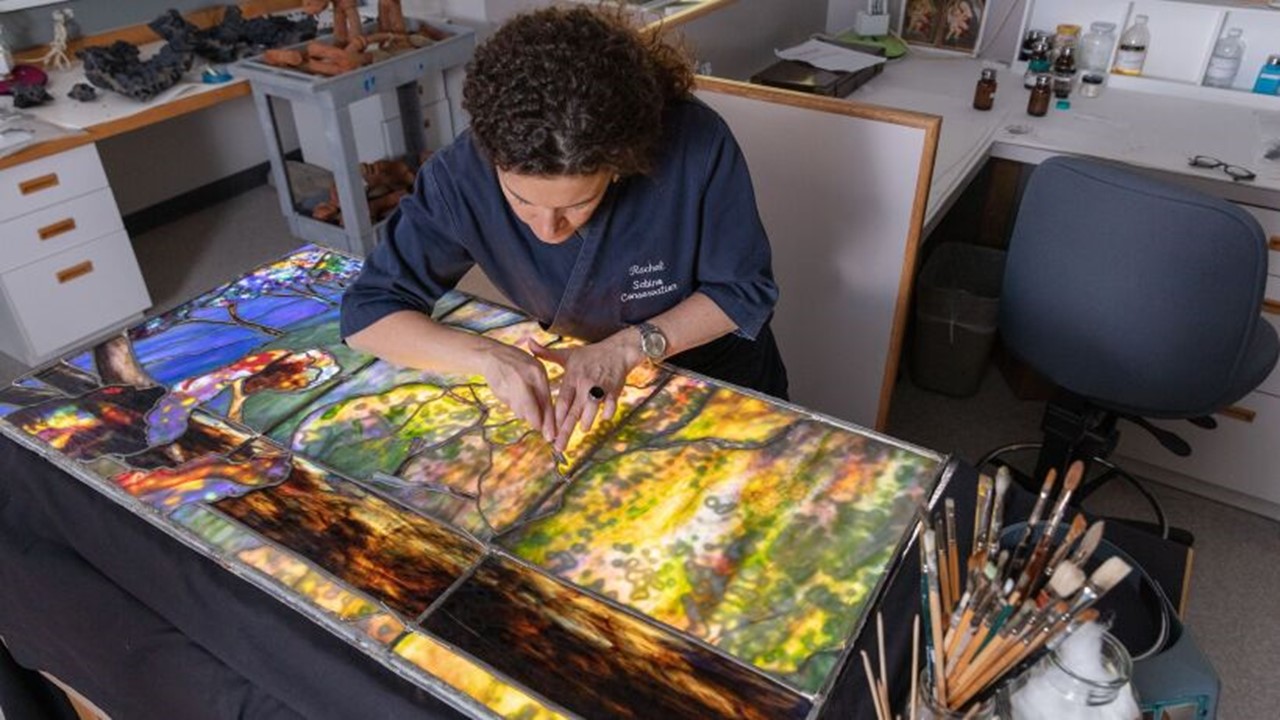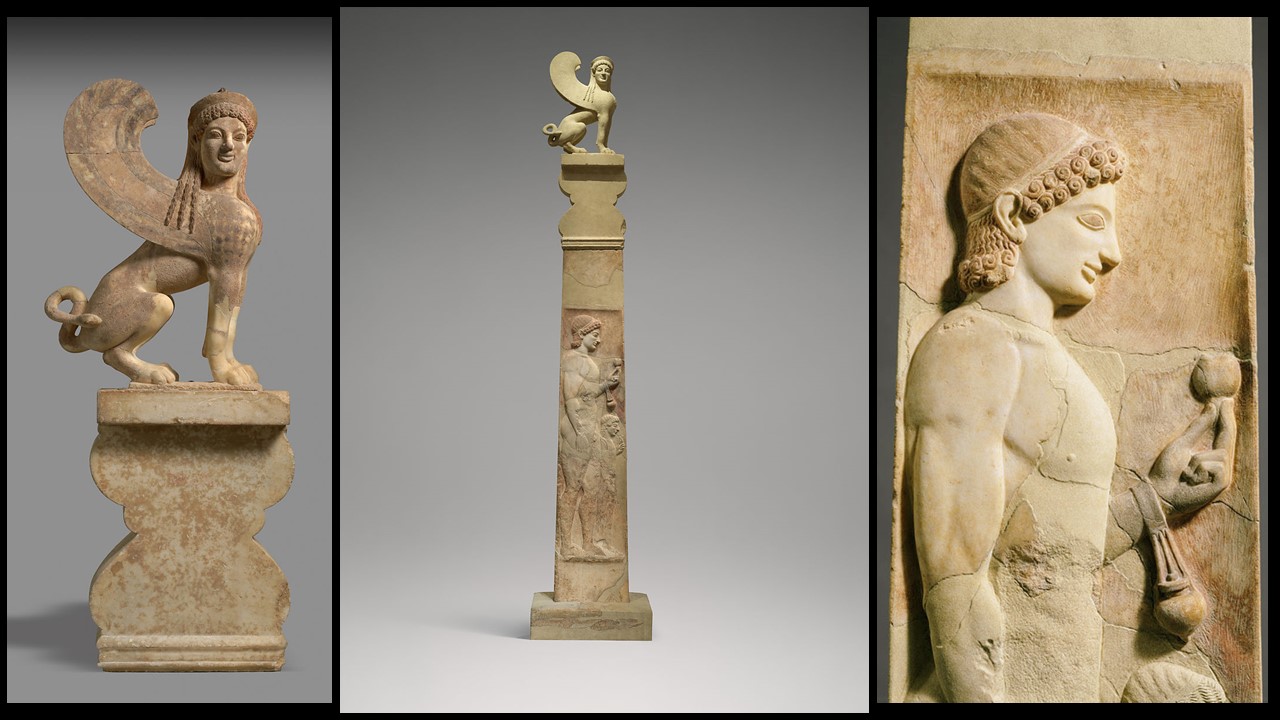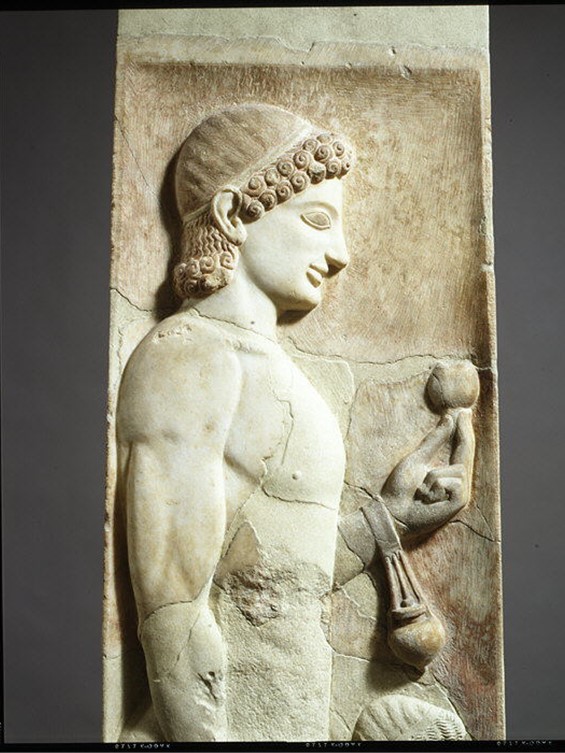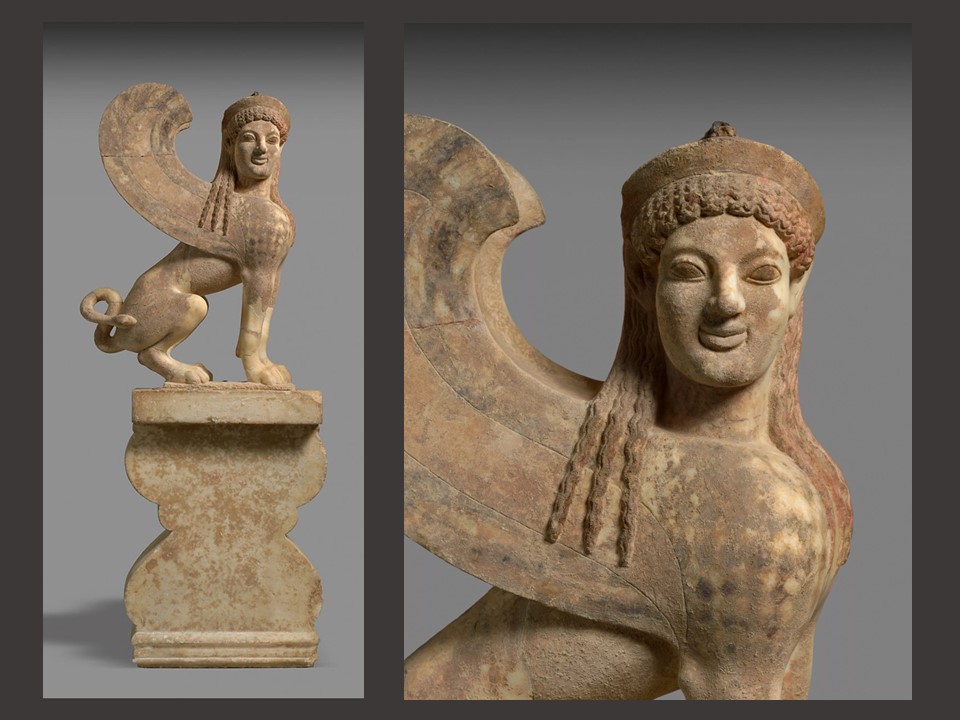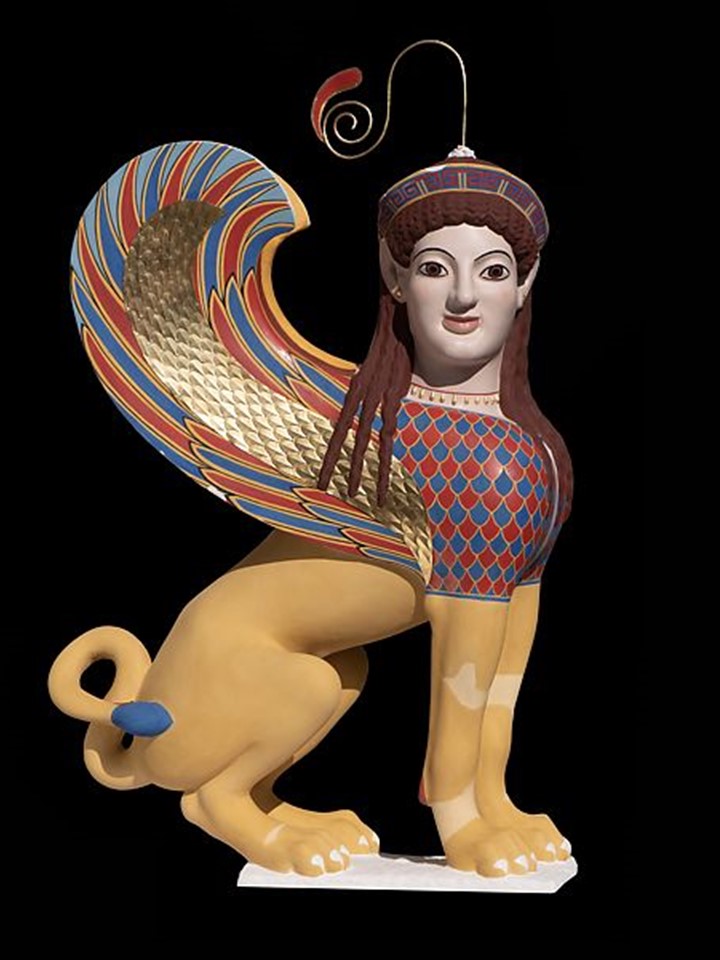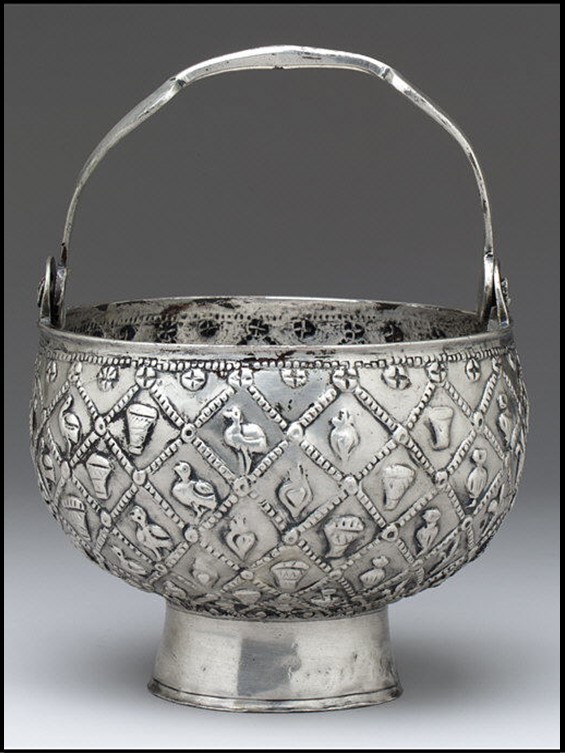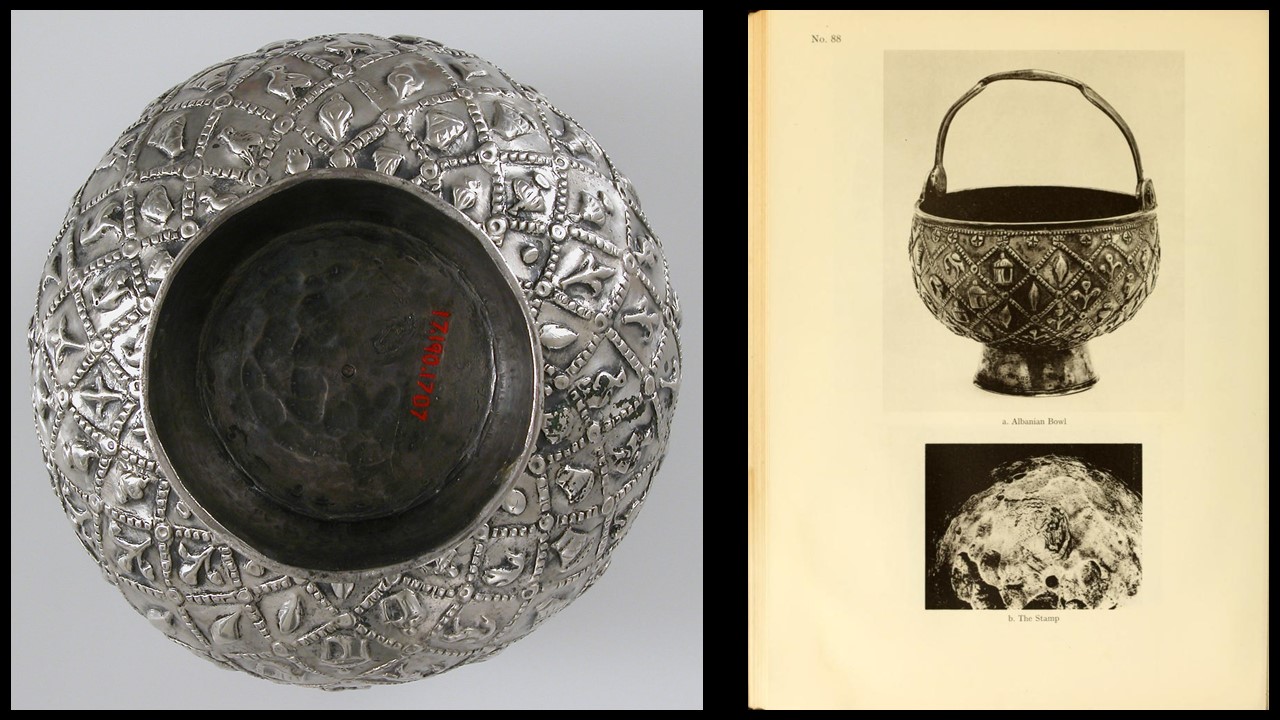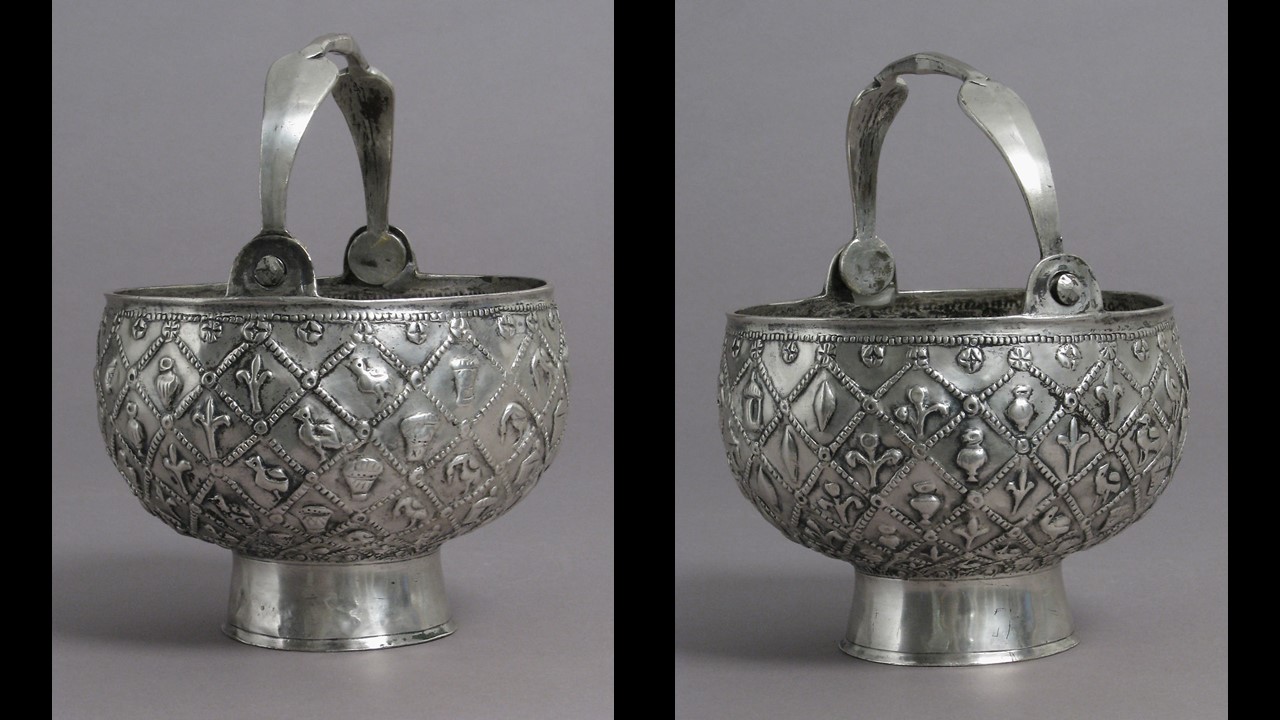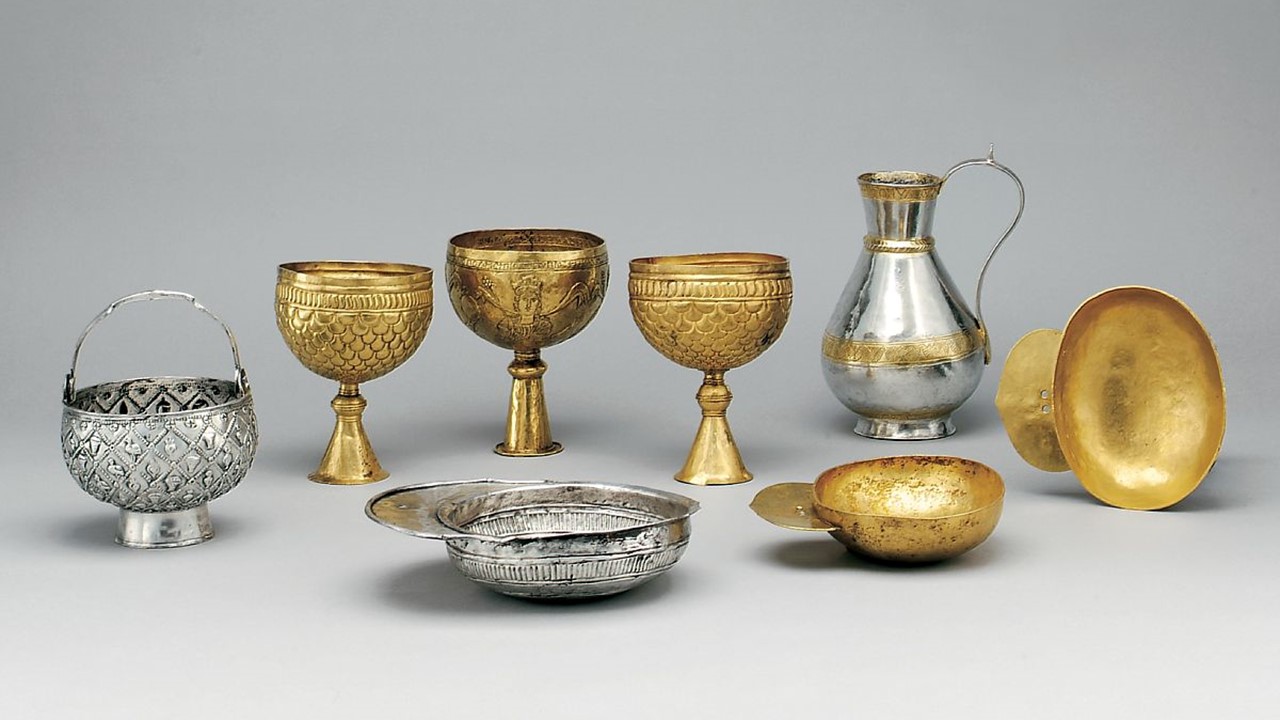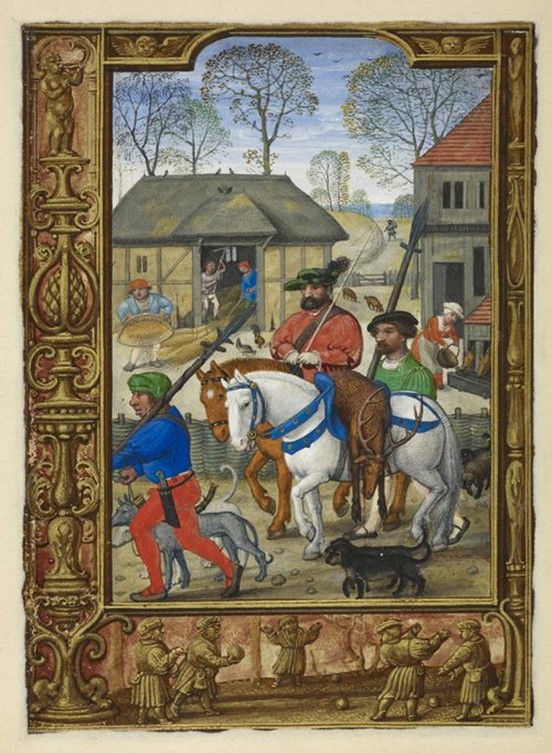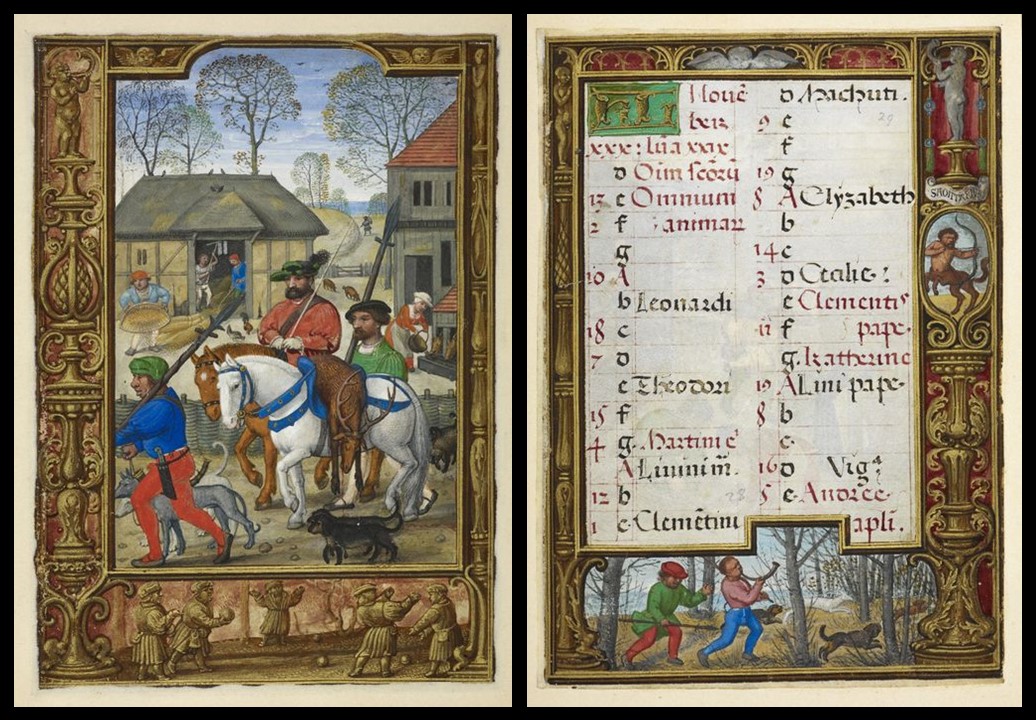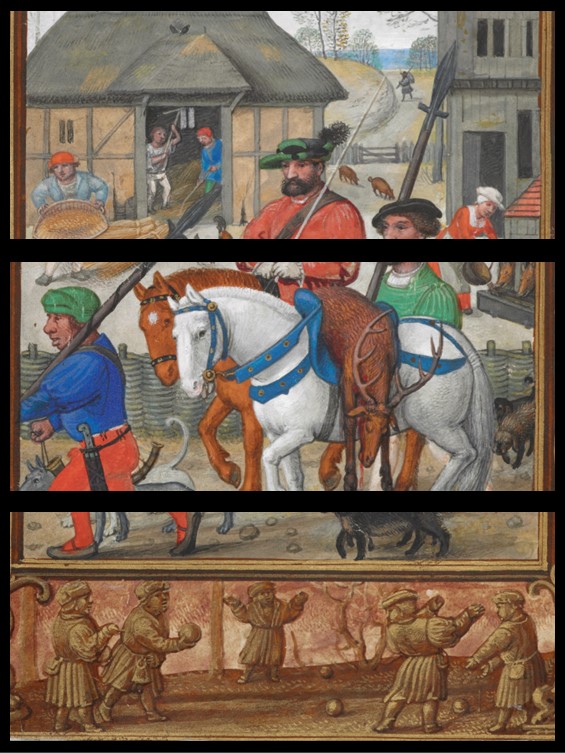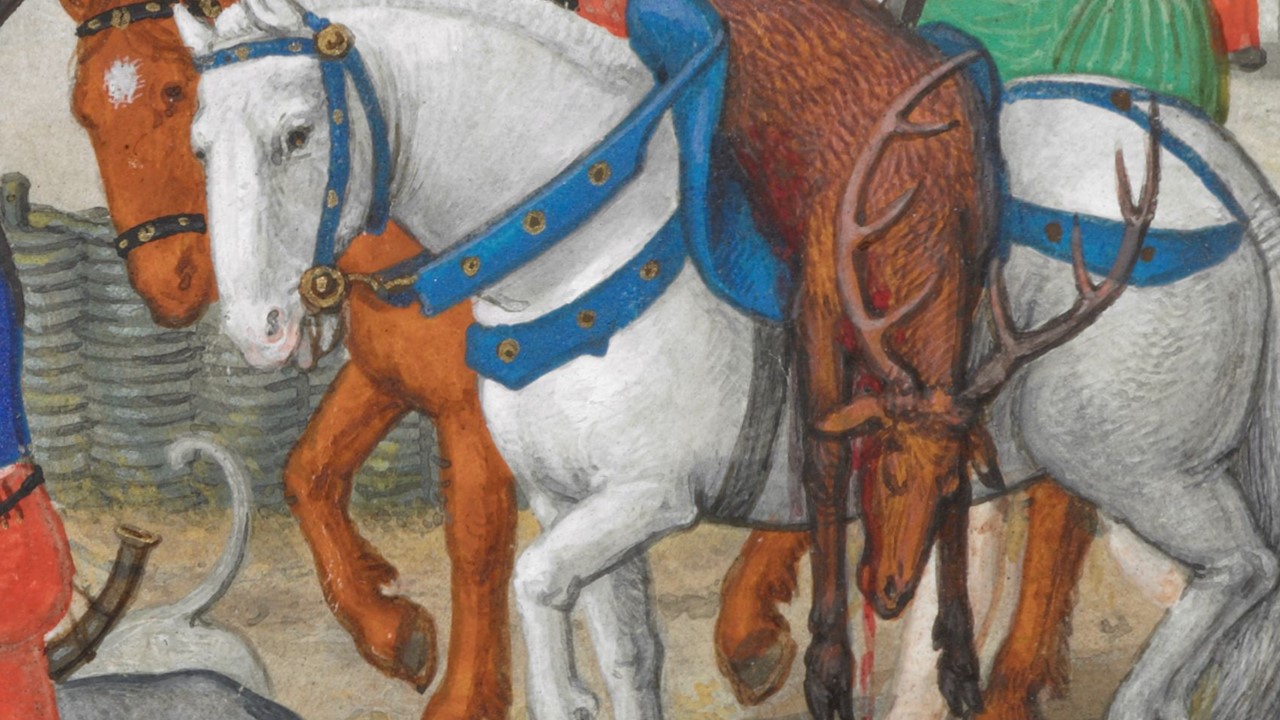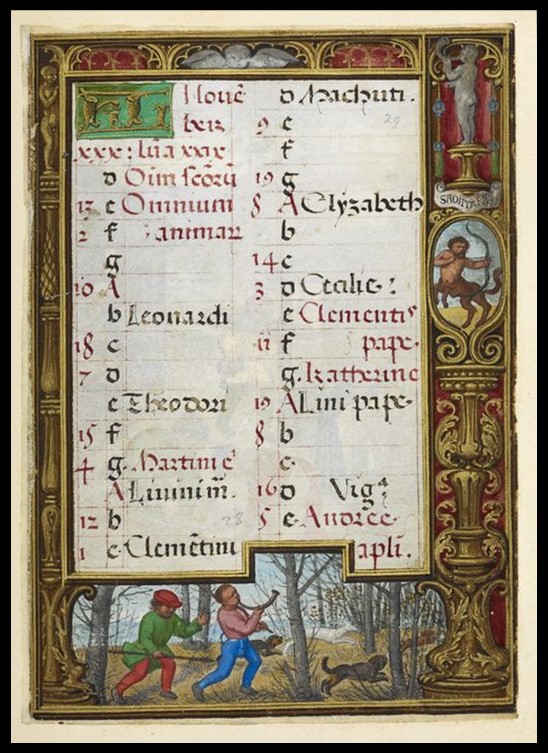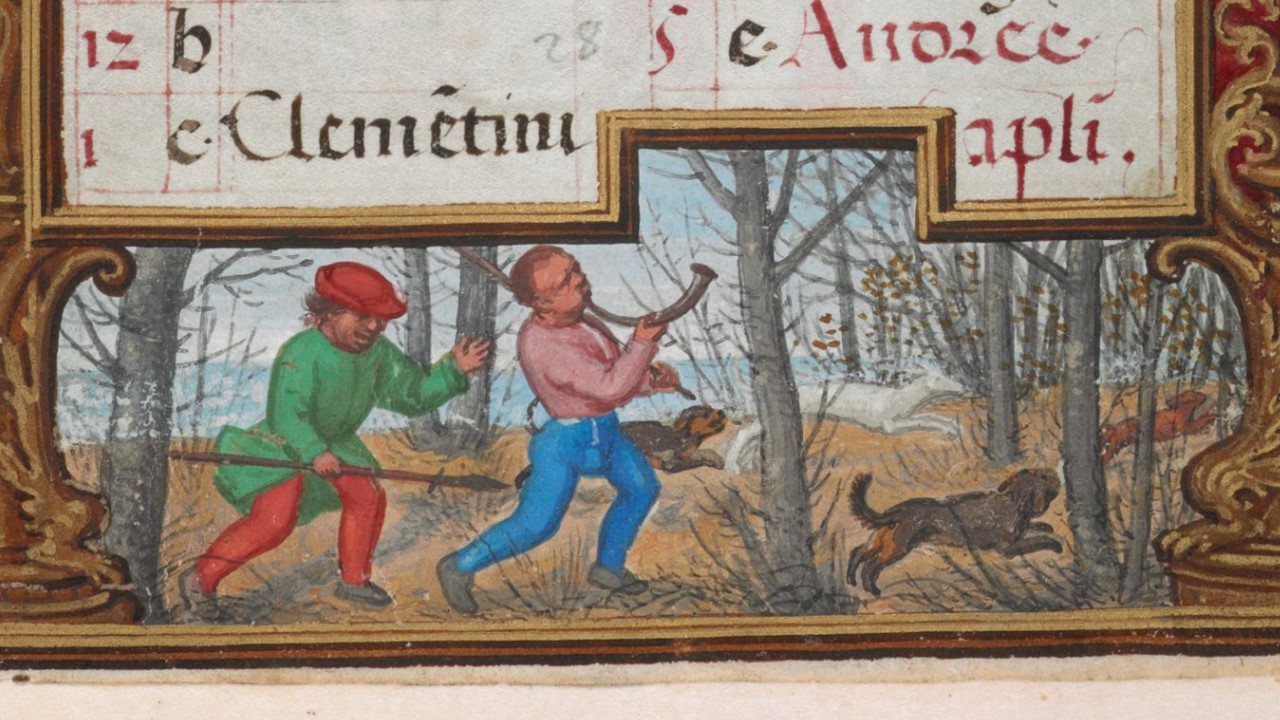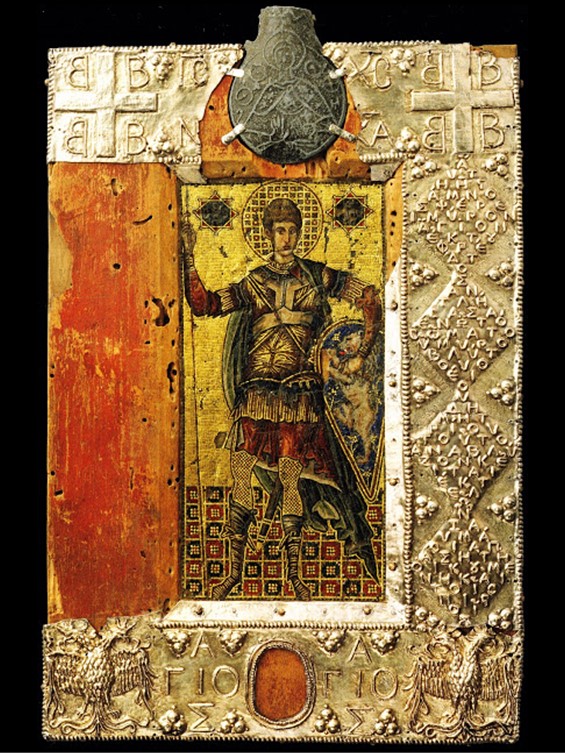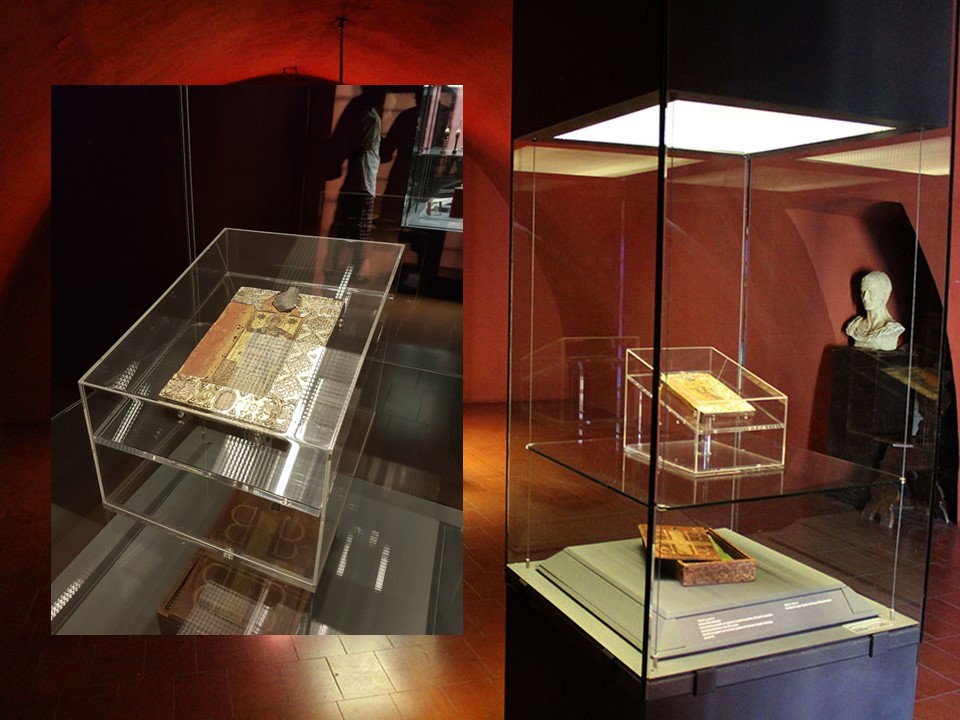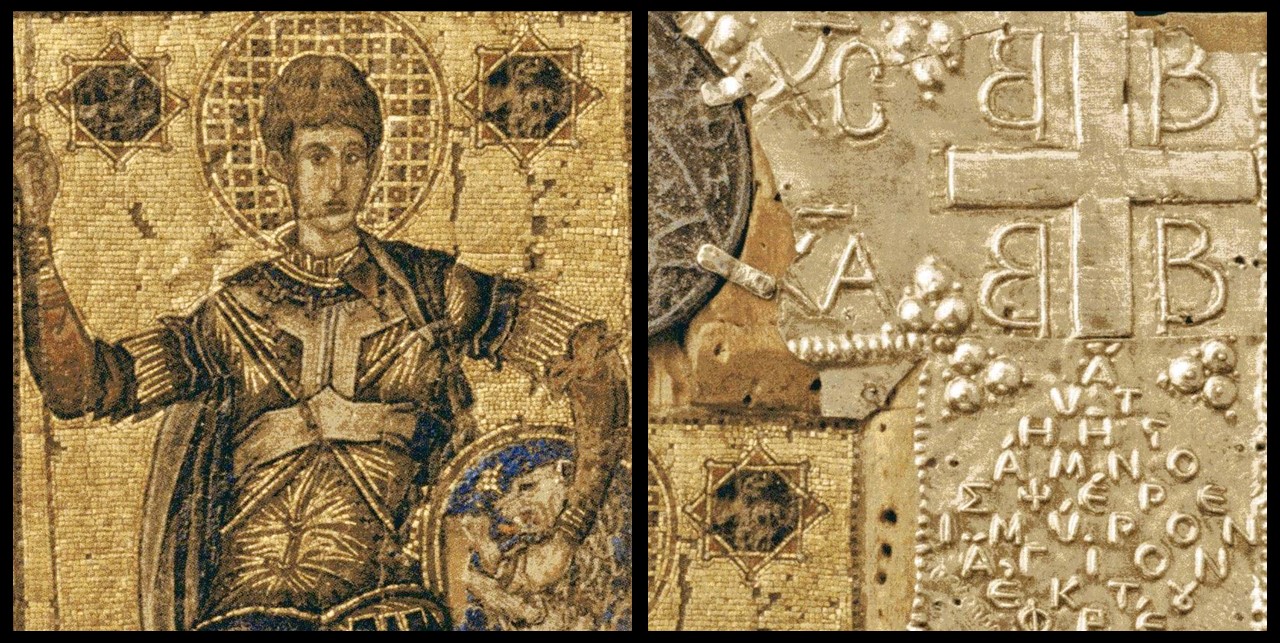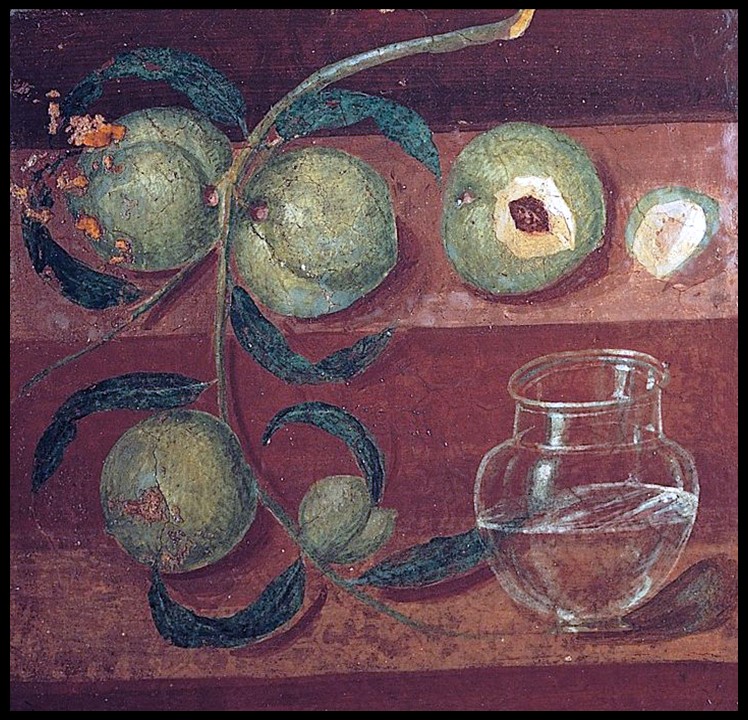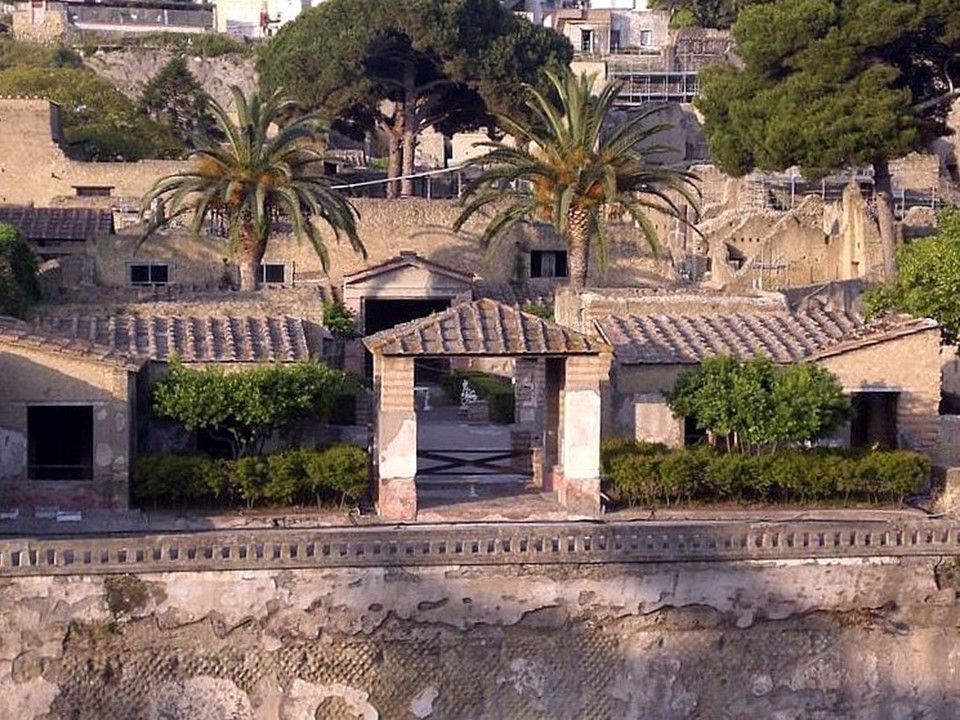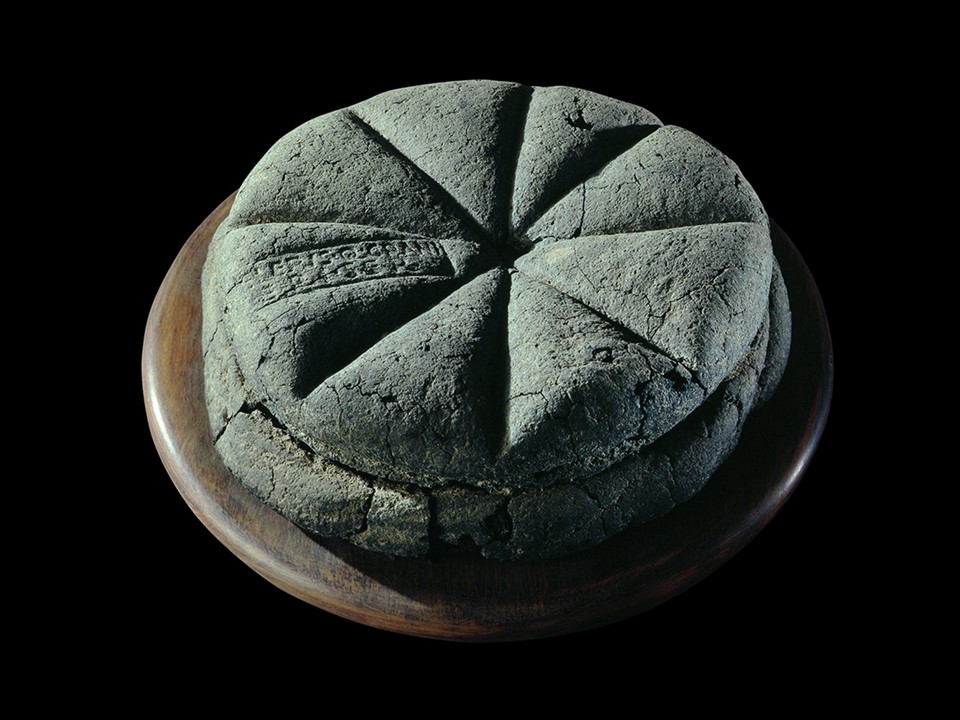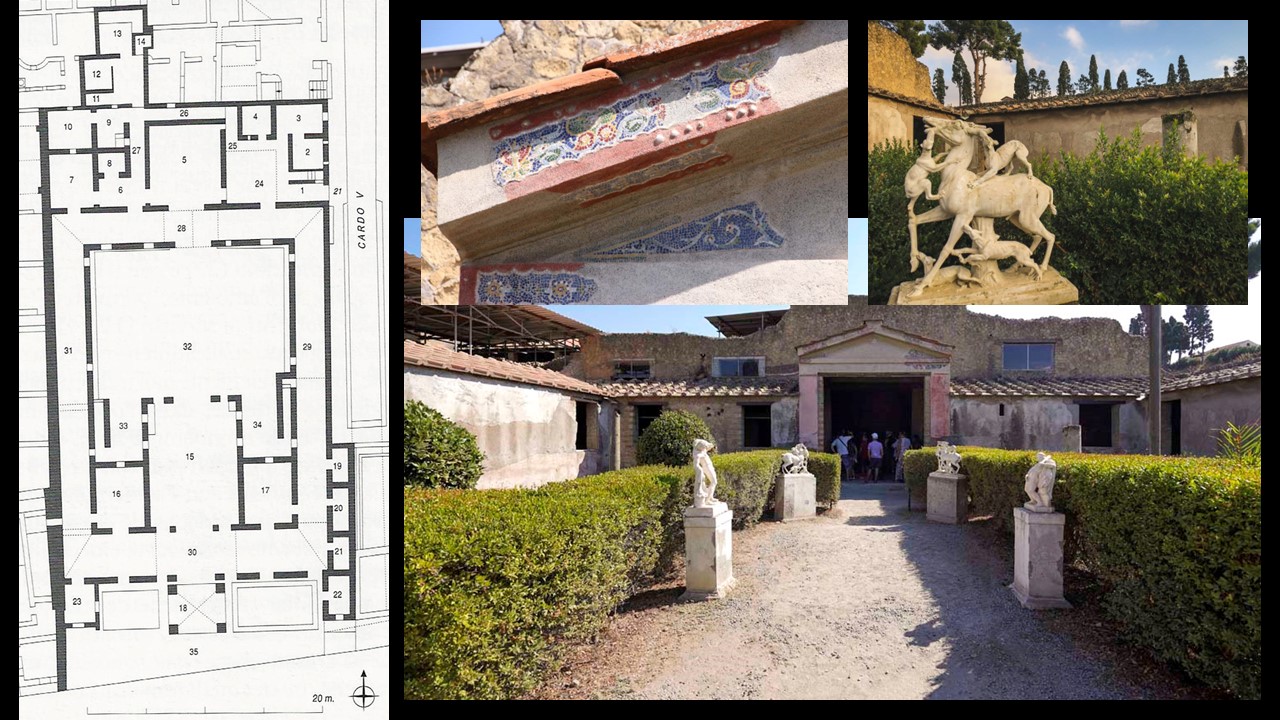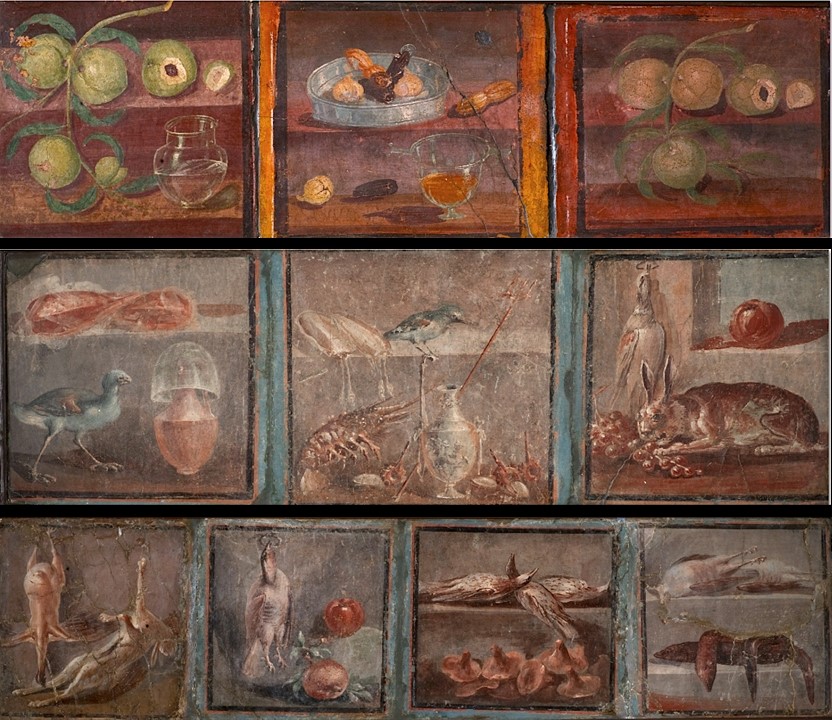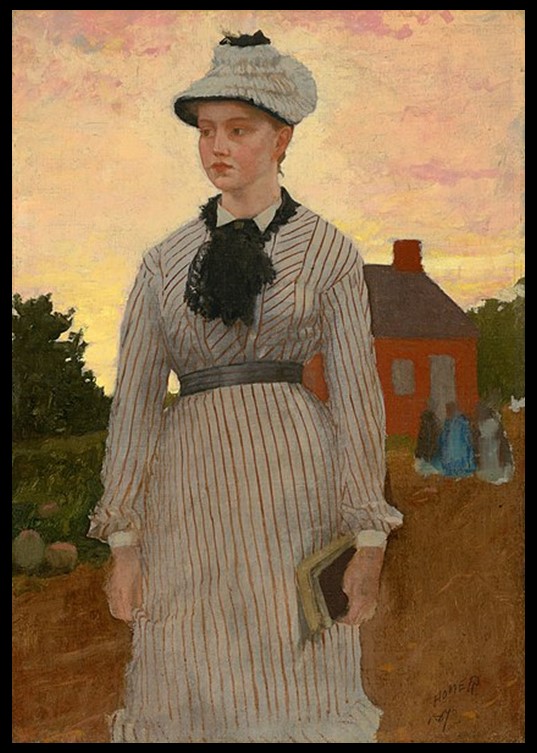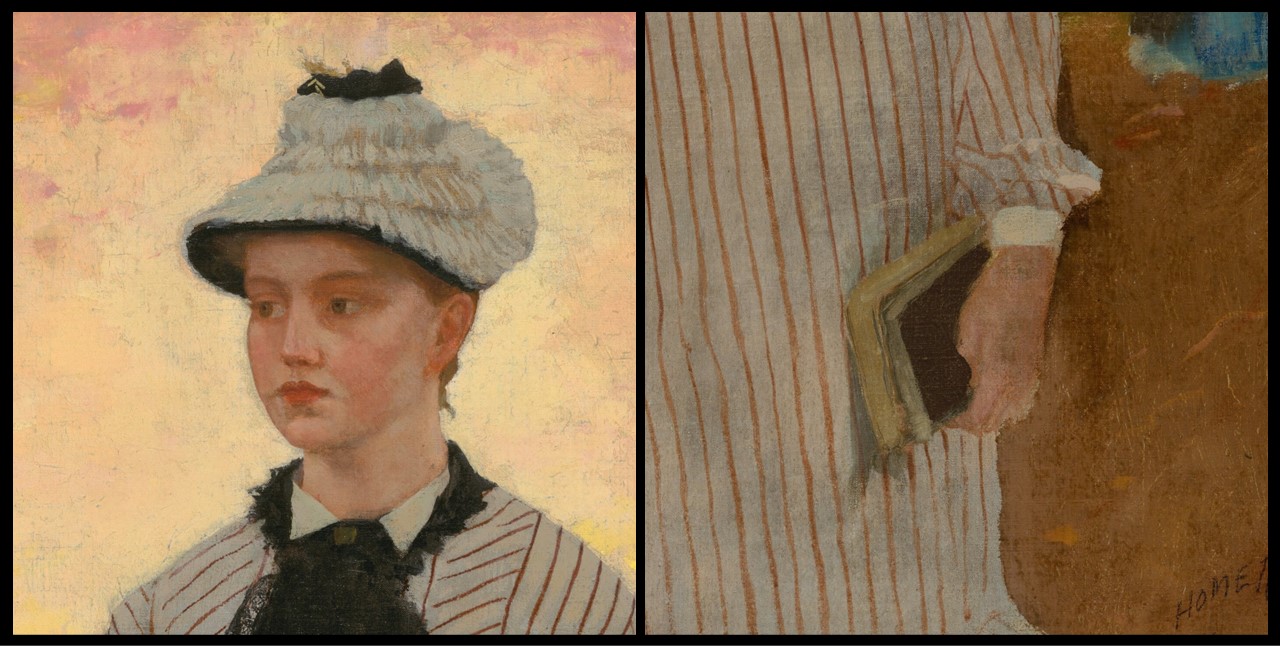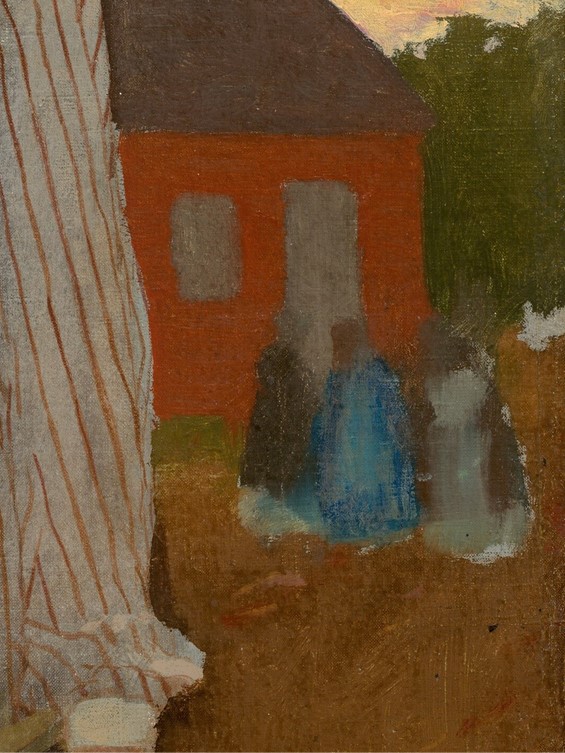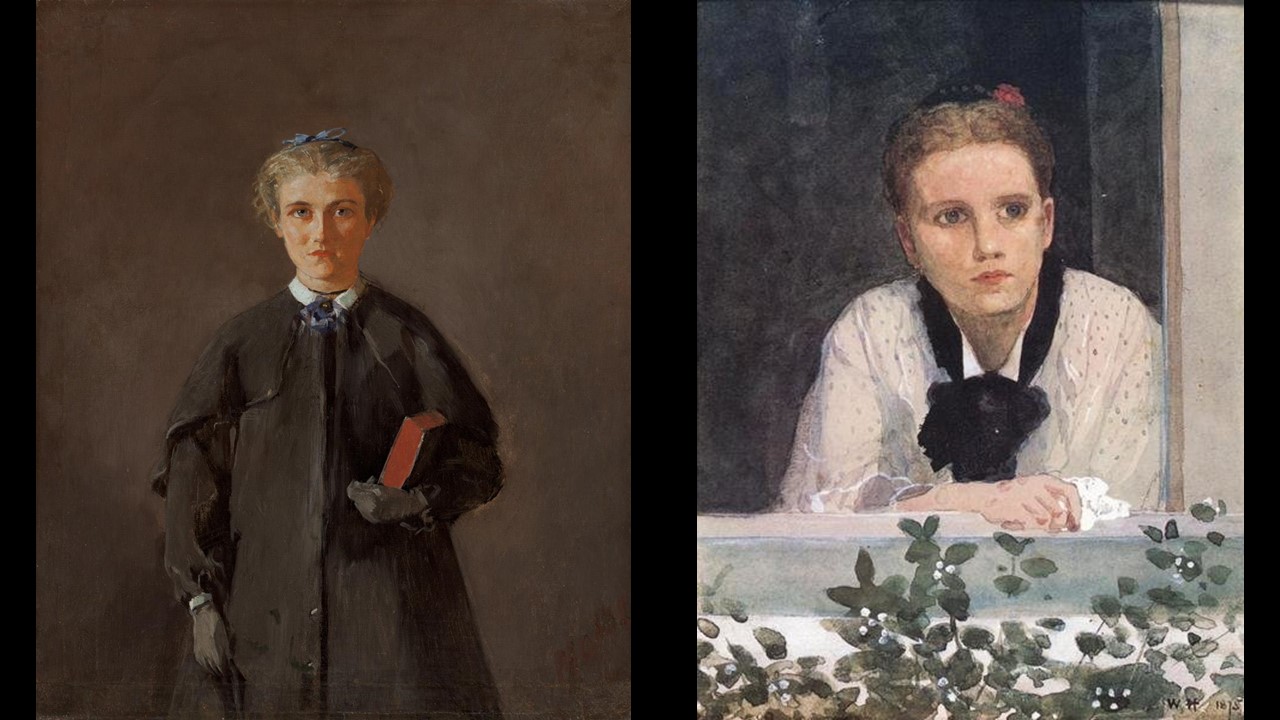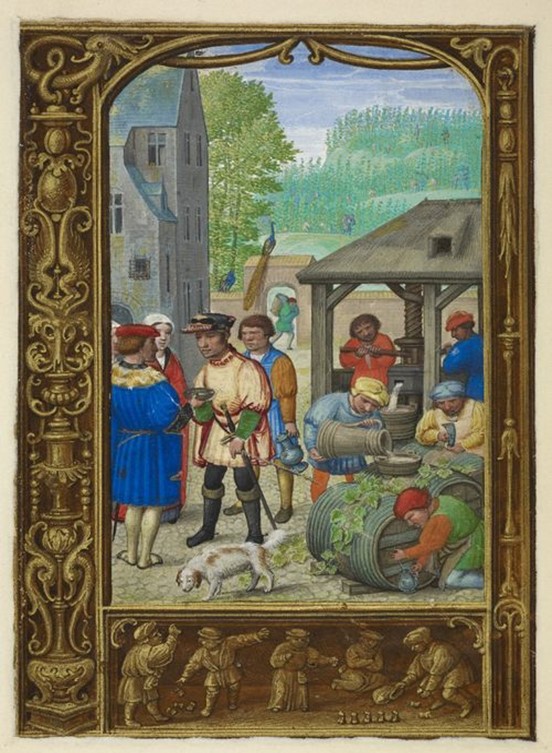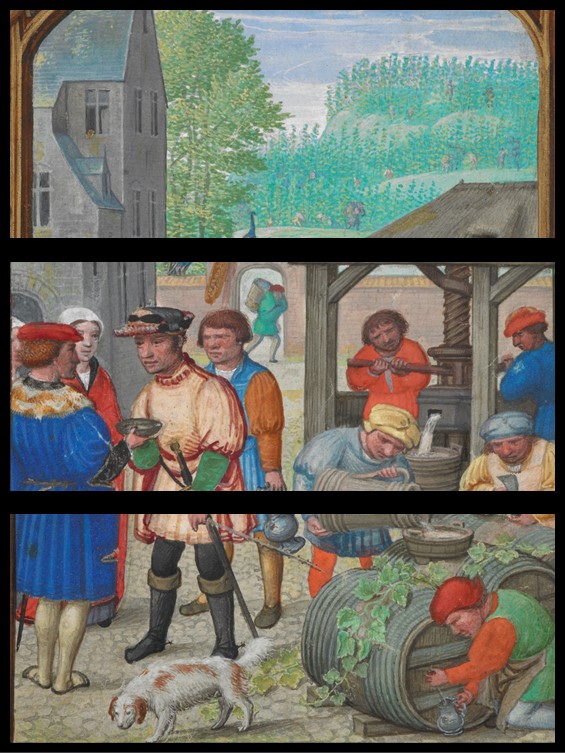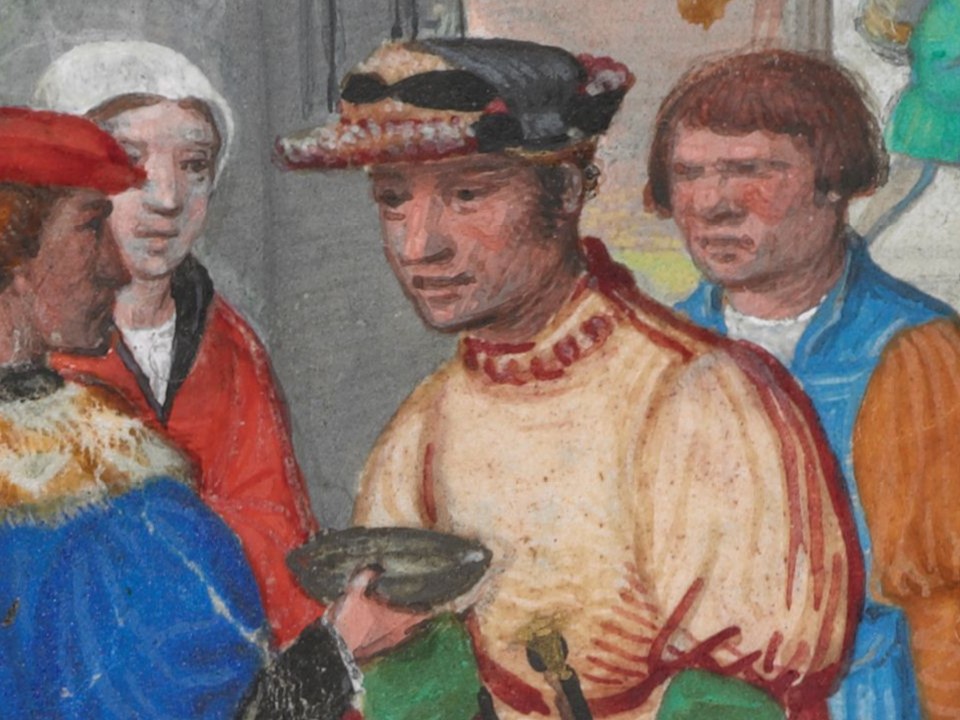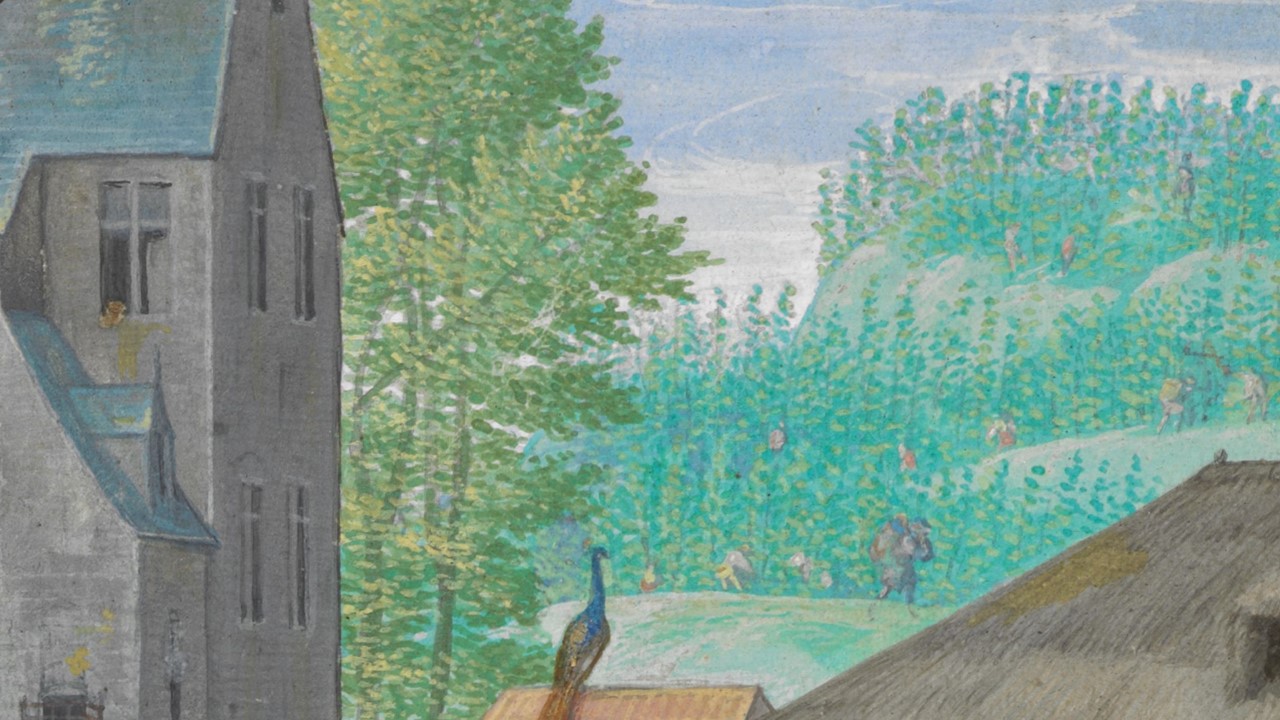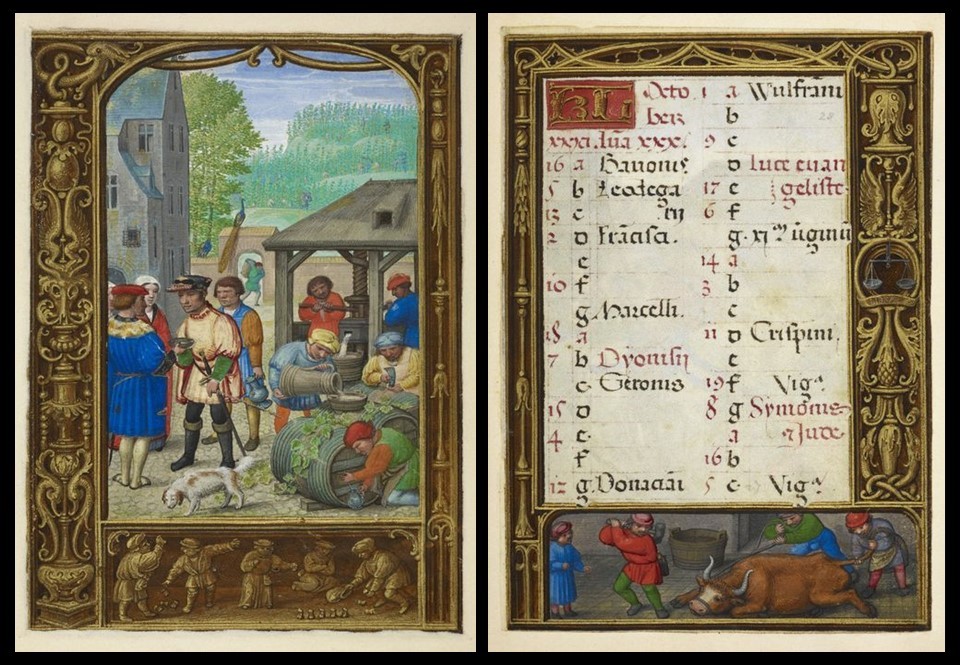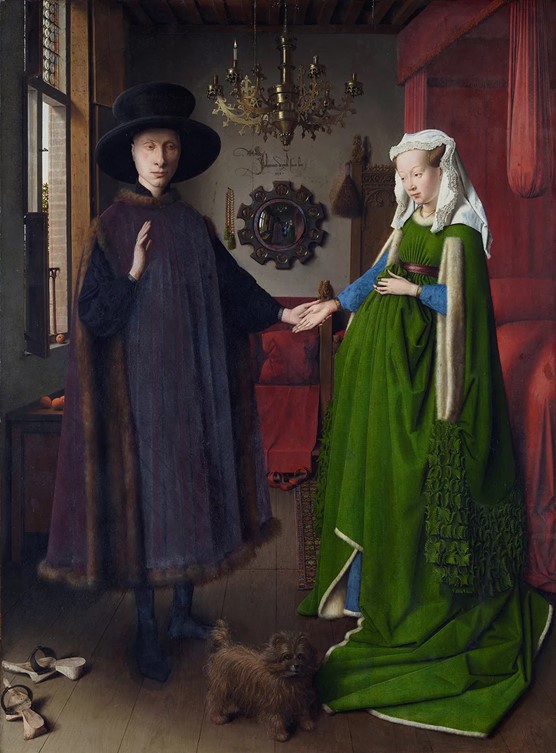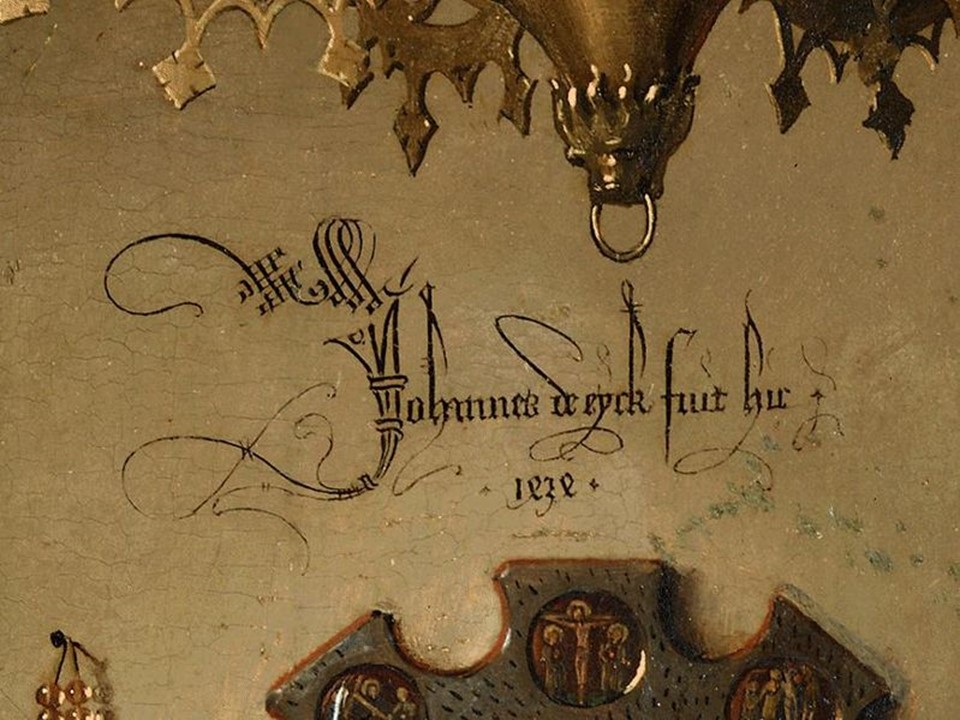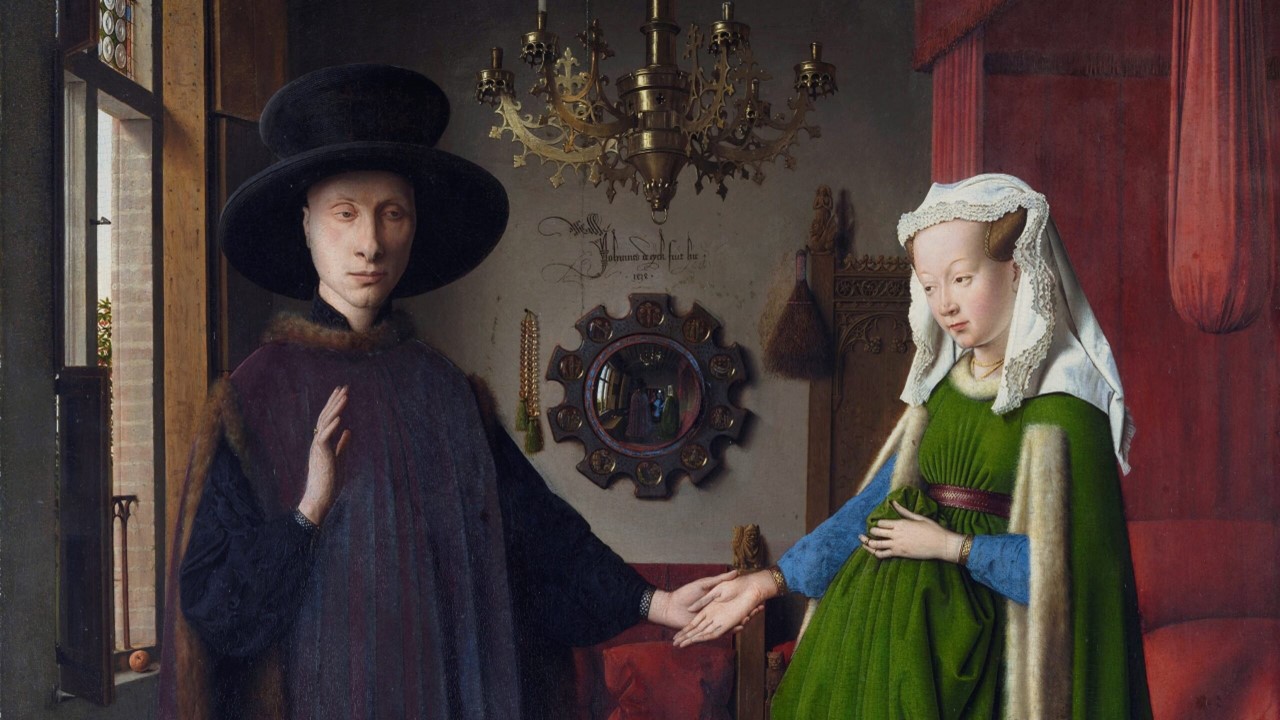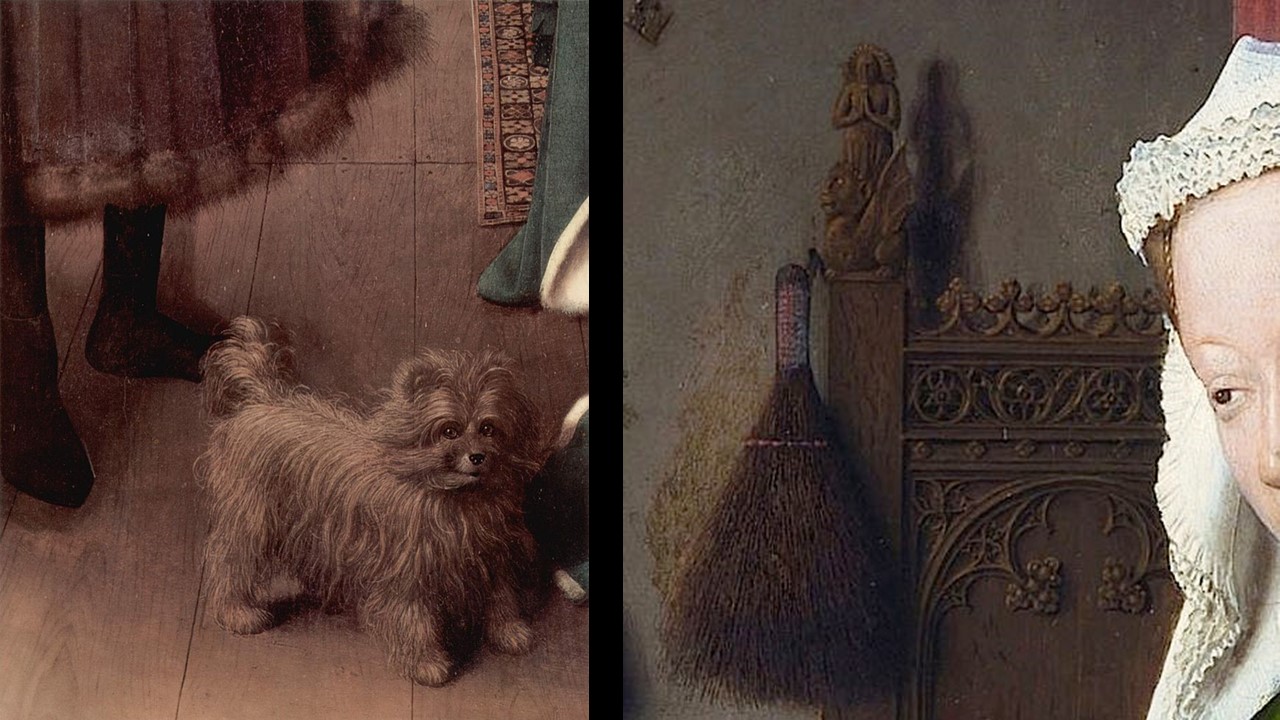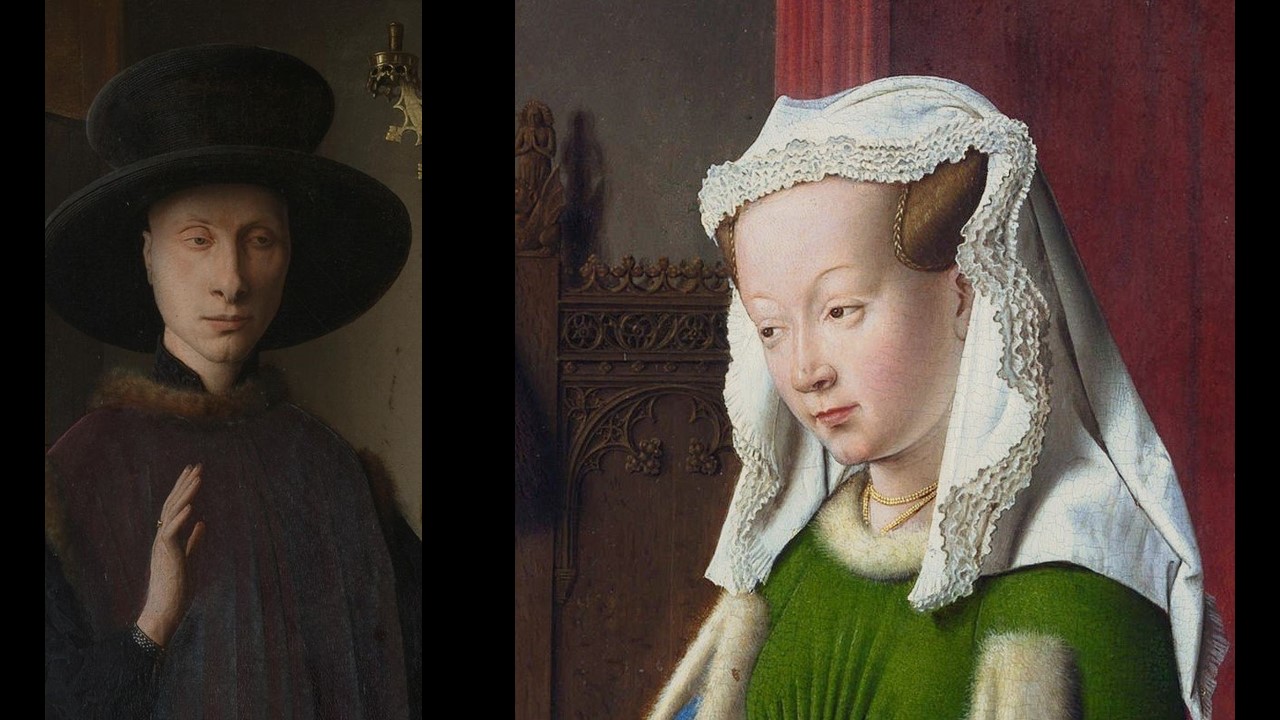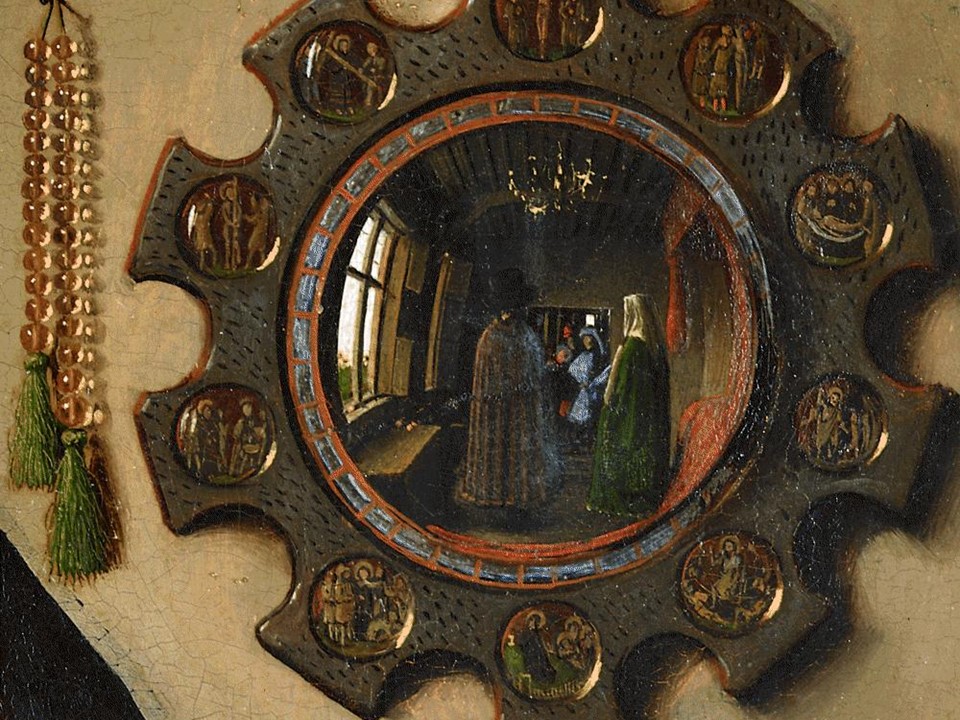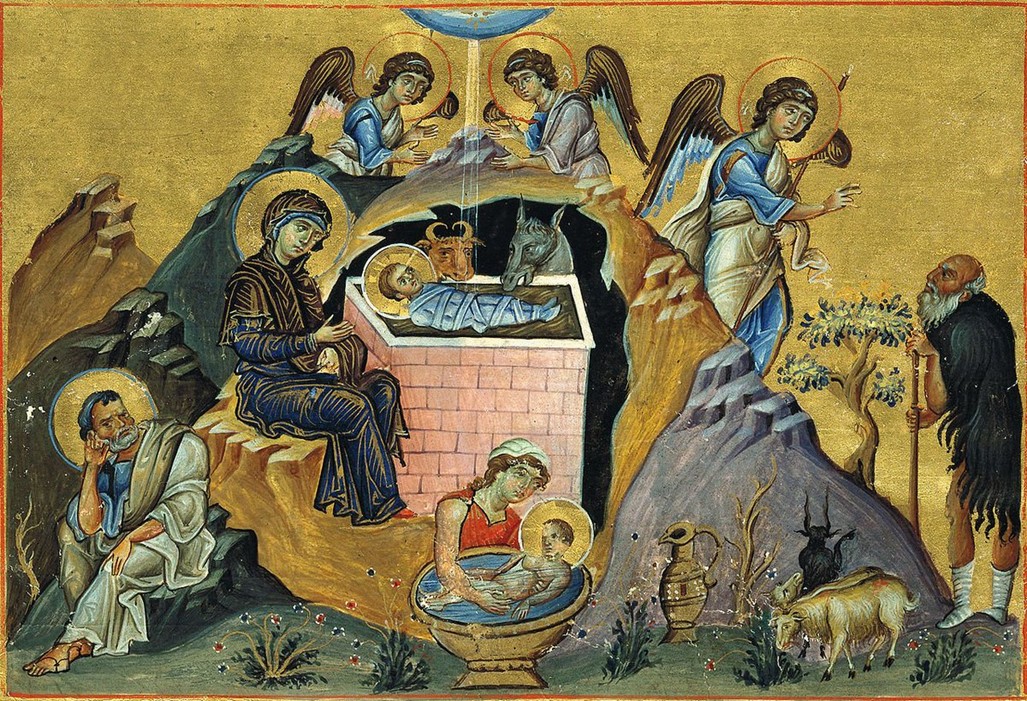
https://en.wikipedia.org/wiki/Menologion_of_Basil_II
Η Γέννησίς Σου, Χριστέ ο Θεός ημών, ανέτειλε τω κόσμω το φως το της γνώσεως· εν αυτή γαρ οι τοις άστροις λατρεύοντες, υπό αστέρος εδιδάσκοντο, Σε προσκυνείν, τον Ήλιον της δικαιοσύνης, και Σε γινώσκειν εξ ύψους ανατολήν, Κύριε, δόξα Σοι. (Απολυτίκιο των Χριστουγέννων, ήχος δ΄). Your birth, O Christ our God, dawned the light of knowledge upon the earth. For by Your birth those who adored stars, were taught by a star, to worship You, the Sun of Justice, and to know You, Orient from on High. O Lord, glory to You. (Christmas Apolytikion: Fourth Tone)… Merry Christmas… Best Wishes for Peace, Health, and Happines! Enjoy the Day with the Byzantine Nativity scene from the Menologion of Basil II. https://www.pemptousia.gr/2021/12/i-gennisis-sou-christe-o-theos-imon/ and https://www.goarch.org/-/hymns-of-nativity
One of the most luxurious of all Byzantine manuscripts, the Menologion of Emperor Basil II (958 – 1025)in the Vatican Library (Ms. Vat. gr. 1613), contains 430 amazing miniatures in 272 folios! It is a treasure cove for Byzantine Art and a high point of the Macedonian Renaissance.
The Byzantine Menologio, a book arranged according to the months, is a liturgical book of the Greek Orthodox church. Simply put, it is a Book of Saints, presenting short information on the saint’s life and martyrion. It is read on the Saint’s feast day, during the morning matins, and serves as a Church Calendar.
The Menologion of Basil II has compiled ca. 1000 AD, under the auspices of the Byzantine Emperor Basil II of the Macedonian Dynasty. It is an unusually opulent manuscript, created at Constantinople for liturgical use, and in its present form, covers the first six months of the Byzantine liturgical year, from September through February. The portrait of Emperor Basil II, one of the most successful military leaders of the Byzantine Empire, shows him as a warrior defending Orthodoxy, standing on a low podium, clad in his military regalia, graciously accepting his enemies’ submission.
The manuscript contains around 430 miniature paintings executed by eight different artists. The artists identified by their name written at the edge of each miniature are: Pantoleon, who seems to have been in charge of the group, Georgios, Michael the Younger, Michael of Blachernai, Simeon, Simeon of Blachernai, Menas, and Nestor.
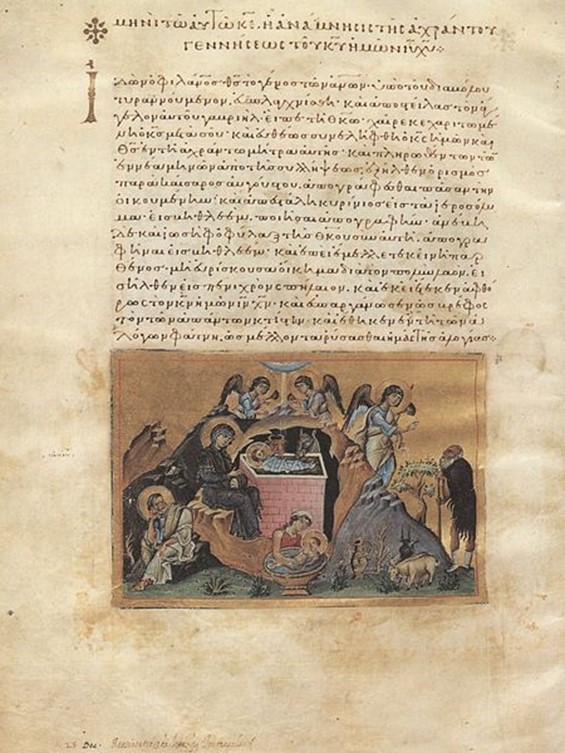
https://en.wikipedia.org/wiki/Menologion_of_Basil_II
The Nativity scene, celebrating the Birth of Jesus and the Annunciation to the Shepherds, was painted by Symeon of Blachernae. It is a well-balanced composition achieved within a typical Byzantine ‘Nativity’ Landscape comprised of a mountain cave executed in the typical ‘broken terrace’ motif of the Greco-Roman tradition.
The central axis of the composition is dedicated to the presence of God, as exemplified by the Bethlehem Star at the very top, the newborn Child in a manger, and a midwife bathing Christ at the lower part of the scene… The Star of Bethlehem is heraldically flanked by two rejoicing angels, festively dressed in sky-blue and taupe-coloured garments. To the right, Simeon of Blachernai presented the Annunciation to a rather rugged-looking Shepherd. To the left, the depicted Virgin sits near Christ, but Joseph, in the lower left corner of the miniature from the Menologion of Basil II, seems distant and thoughtful. What an amazing Nativity scene this is!
Merry Christmas!!!
For a Student Activity inspired by the Menologion of Basil II – The Nativity of Christ Scene, please… Check HERE!
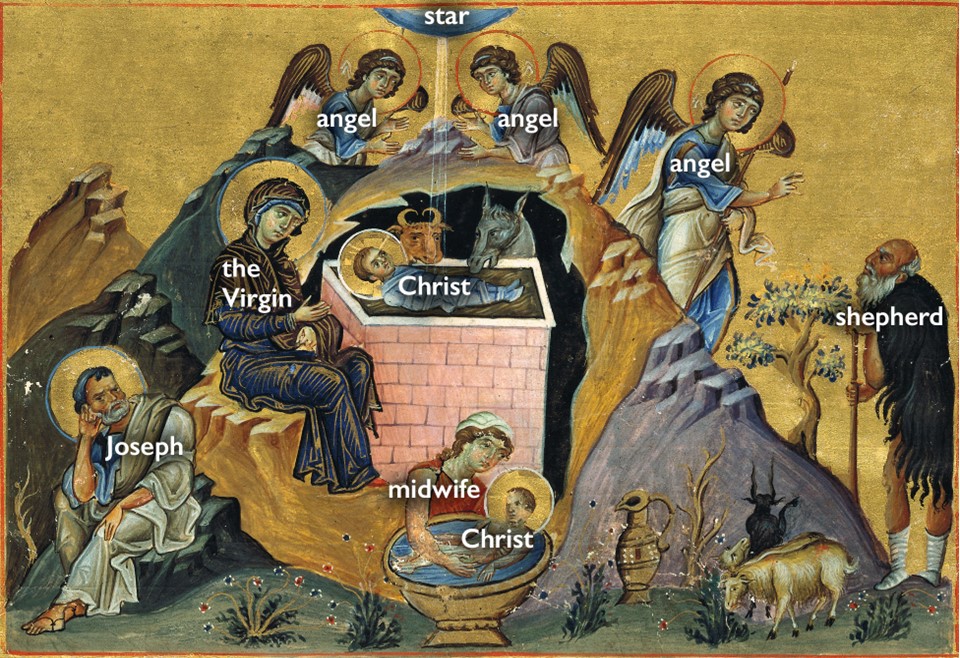
Interesting to read… The Illuminators of the Menologium of Basil IIby Ihor Ševčenko, Dumbarton Oaks Papers, Vol. 16 (1962), pp. 243+245-276 (43 pages) https://www.jstor.org/stable/1291164?read-now=1#page_scan_tab_contents
